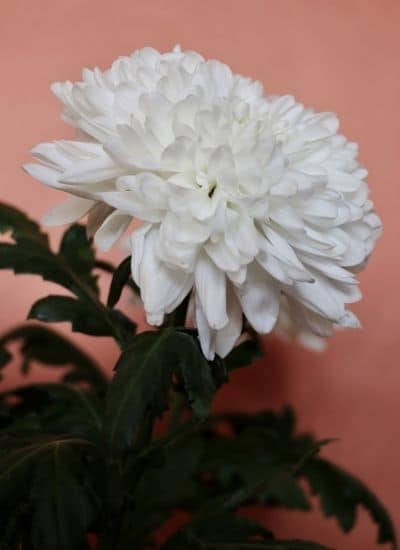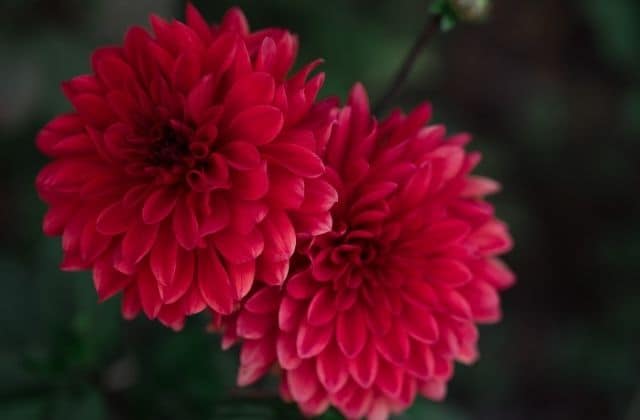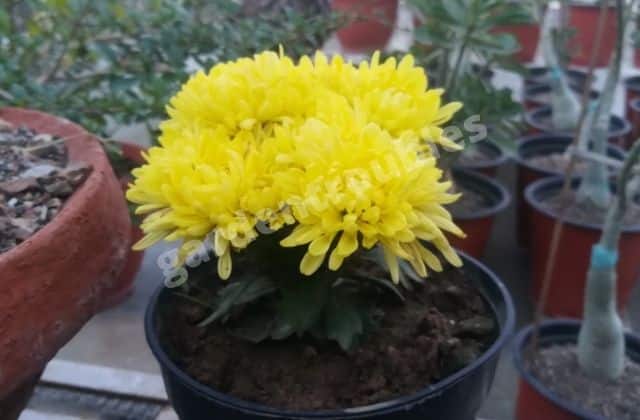Shevanti plant care is extremely necessary because it is not one of those low maintenance plants which you can buy and stop giving attention to.
It requires a lot of care and right treatment for you to enjoy its bloom.
How to take care of shevanti plant ?
Shevanti plant care demands providing it full sunlight, and also making sure that it is kept away from night light source during its blooming season. Watering needs to be balanced as too little or too much water will start causing troubles.
If you are one of those first timers or someone who just can’t keep chrysanthemum alive
Then, you have come to the right place.
As, today I am going to cover every single thing about Guldavari Plant Care.
Shevanti Plant Care – Chrysanthemum Care in India
| Sunlight Requirement | Full Sunlight (5-6 hours), filtered sun in summer afternoons |
| Watering | Keep moist most of the time, but not soggy. |
| Potting Soil | Highly rich and well draining soil |
| Pest | Attacked by Mealybug, spray with neem oil immediately when encountered |
| Pinching | Keeps the growth in check |

1. Sunlight
It requires full sunlight to strive healthy and produce its beautiful bloom.
So, keep your plant in a location where it can get at least 5-6 hours of direct sunlight.
Morning sunlight is always best for any plant & so is the case with Shevanti plant.
Sunlight Requirements After Blooming (Guldavari Plant Care)
As I just told you above, that this plant loves to soak under the sun and will bloom the best under it.
But when the plant has started to bloom move it under shade, as too much exposure to sunlight will cause its flowers to fade color.
Also, moving them undercover will increase their bloom time.
This is one of the insider care tip for chrysanthemum in India that you will rarely get.
Also read –
Krishna Kamal Plant – Care & Vastu
9 o’clock flower plant care guide
2. Away From Night Light Source

This plant starts to bloom when the day starts to get shorter and night time increases.
Simply speaking when the weather is transitioning from summer to winter. Which means they need more time to stay devoid of light to start flowering.
That is why be very careful to not place them near any street light or night bulb or lamp.
They need to stay in darkness during the night.
3. Watering Properly (Guldavari Plant Care)

Chrysanthemum loves to soak under the sun and thus requires a good amount of watering, but cannot tolerate standing water.
If you keep the soil wet for a longer time, the roots will start to rot & you will lose your plant ultimately.
Your aim should be to make the soil moist but not wet.
On the other hand:
If you see your plants leaves drooping and turning brown from the lower part, then there are high chances you are keeping your plant thirsty.
Increase the amount of water or do it more frequently.
Keeping a chrysanthemum plant thirsty is not healthy as it cannot withstand drought conditions & will suffer big time.
Don’t get intimidated by this balancing routine, once you start with this you will be able to identify these signs by yourself very easily.
Also check – Plants that give oxygen 24 hours.
4. Right Type of Soil – Shevanti Plant Care
Chrysanthemum loves to grow in nutritious soil with good drainage.
On top of that it needs the soil to be moist for most of the time.
To provide this optimal kind of environment to your Chrysanthemum,
You should make a potting soil in the following ratio:
- Garden Soil – 40%
- Coco Peat – 15% ( for retaining moisture for a longer time)
- Compost – 25% ( Vermicompost, rotted cow dung or mixture of both)
- River Sand – 20% (for better drainage)
Add a handful of neem cake to protect the soil from pest attack.
If you don’t make your own potting soil at home then I would recommend you this potting soil for Shevanti plant.
5. Pest
Chrysanthemum is often attacked by mealybugs and aphids, so keep looking for them (under the leaves as well), and as soon as you see them use a good garden sprayer & wash them off in the early stage.
If they have already spread all over the plants, take a diluted solution of neem oil (like this one specially made for pest control) and spray it every 15 days until these plant eaters are nowhere in sight.
Always apply neem oil or any other pesticide or insecticide in absence of sunlight, as it can burn the plant.
6. Pinching
After 4-5 weeks of planting chrysanthemum, start pinching your mums for better growth and making it bushier.
This helps in overall growth of the plant and encourages new growth.
Also, if you have any flowers that have died, you should prune it off as well.
But make sure to remove the flowers only & not the leaves.
7. Fertilizing (Shevanti plant care)
Chrysanthemum is a heavy feeder and you should fertilize it every 20-25 days with a good quality compost.
One of the best fertilizer for Chrysanthemum in India is a vermicompost like this one.
When the flower is in its budding stage, it needs to be fed even more, for this time you can use seaweed fertilizer and provide it every week to the plant for lots of bloom. (Stop applying fertilizer once the plant starts to bloom)
Make sure you don’t apply fertilizer when the sun is strong, as it can burn the plant and its leaves.
Make a habit of applying fertilizer during the evening, so that it gets absorbed by the plants till the sun comes out.
8. Stalking
Stalking simply means providing support to your plant so that it doesn’t fall.
Chrysanthemum plants usually fall sideways due to their own weight once it starts to flower.
And its stems can even break down due to its weight.
So, once you see that a lot of buds has come into sight, provide it support by inserting trellis into the soil.

Important Note – Do not provide it support, when it is still in its growing period and is due to be repotted into a bigger pot. Once the plant has been planted into its final pot then only you should provide it with support, otherwise it will be useless.
Conclusion
I hope this guide will help you take proper care of chrysanthemums in India.
If incase I have missed on any topic that I should have talked about, do let me know through the comment section.
Help your family members or friends who are into gardening by sharing this post with them.




